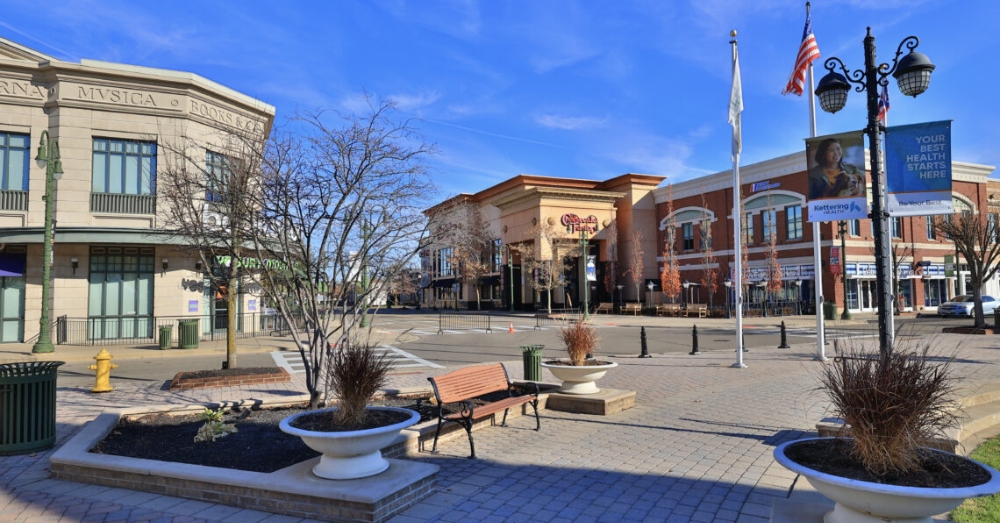
Bunkers, Backyard Gardens, and More
From Beaver Creek, Ohio, to San Antonio, Texas, American suburbs nationwide take many of their design and lifestyle queues from the military. This article explores how.
Hundreds of military bases are spread across America, and every US state has at least one. Unsurprisingly, nearby suburbs and exurbs are influenced by military culture. Let’s take a look at how that applies in broad terms to five suburban American towns.
1. Beavercreek, Ohio
Beavercreek, Ohio, is a popular destination for military families thanks to its proximity to Wright-Patterson Air Force Base. In part to cater to these families, some developers have taken elements of base housing and incorporated them into civilian homes.
One example can be seen in the local community gardens. On military bases with private housing, communal spaces are still prevalent, including amenities like pools, gyms, grilling areas, and community centers. Community gardens serve a similar function.
Beavercreek was around long before the advent of suburbia following World War II, but it still took many cues from military-inspired suburban ideals. Visitors will notice many subdivisions reflecting standard suburban areas with similar homes and HOA requirements to keep things neat and orderly.
2. Colorado Springs, Colorado
Colorado Springs, CO, is close to the Cheyenne Mountain Complex, NORAD, and Peterson Space Force Base. As a result, the town has a strong military presence, including a local Air Force Academy located just north of the city.
While Colorado Springs is more an exurb of Denver than a suburb, the same ideas apply here as they do in Beavercreek, Ohio. The presence of the nearby Space Force and Air Force influences architecture and landscaping.
Colorado Springs was one of the cities that pioneered xeriscaping gardens. These gardens require little to no irrigation and contain plants that can survive extreme conditions with little care, reflecting a priority on efficiency that fits well with both military and space exploration ethos.
3. San Antonio, Texas
Like Colorado Springs, San Antonio, Texas, is close to several military bases. In this case, you’ll find Fort Sam Houston and the Lackland Air Force Base closest to the city. As with Colorado Springs, there are subtle signs of military influence throughout the area.
Xeriscaping is even more prevalent in San Antonio than Colorado Springs, but there is also a lingering tradition of keeping home victory gardens. Starting shortly before WWI, this tradition encouraged Americans to grow their own food so that farmed goods could be sent to troops.
Victory gardens are a good fit for the fusion of military and Hispanic culture. They’re more commonly found outside of purpose-built military family housing developments, where some Hispanic residents maintain cultural traditions of home food production.
4. Newport News, Virginia
Unlike the other examples on this list, Newport News, VA, is influenced not by the Air Force or the Space Force but by the Navy. The area is littered with historic coastal defense structures, many of which have been incorporated into suburban life.
Huntington Ingalls Industries Shipbuilding (HII) still plays a vital role in building and maintaining US Navy vessels. Seven nearby bases support 85,000 joint military personnel and their family members.
The Newport News Shipyard is a small part of HII but a considerable part of the local culture, and it’s easy to see the disciplined, utilitarian aspects of military influence on urban planning. You’ll also notice the lingering impact of victory gardens in Newport News.
5. Huntsville, Alabama
Huntsville, Alabama, has a strong connection to NASA and the Redstone Arsenal. The influence of these nearby facilities on Huntsville is more evident than it is in most places.
All it takes is a look at the Rocket City development plan. The “city within a city” is being developed very intentionally. It’s one of the largest active commercial developments in the US, and its self-contained nature hearkens back to the influence of nearby bases.
The influence on its architecture dates far back to the early days of the Cold War when bunkers were built in many places throughout the city. Now, those bunkers are being repurposed in the post-9/11 days. Add southern garden traditions, and you have a perfect mix.
This post may contain affiliate links, meaning we may earn a commission if you make a purchase. There is no extra cost to you. We only promote products we believe in.









